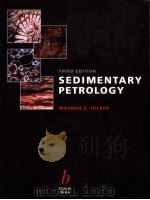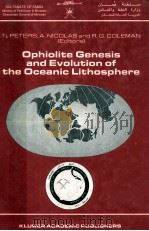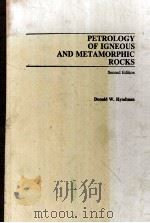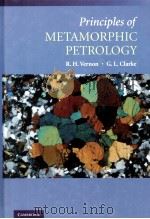《Structural Petrology of Deformed Rocks》
| 作者 | Harold Williams Fairbairn 编者 |
|---|---|
| 出版 | The United Book Store |
| 参考页数 | 344 |
| 出版时间 | 1949(求助前请核对) 目录预览 |
| ISBN号 | 无 — 求助条款 |
| PDF编号 | 813811868(仅供预览,未存储实际文件) |
| 求助格式 | 扫描PDF(若分多册发行,每次仅能受理1册) |
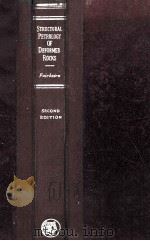
Part Ⅰ Petrofabric and Experimental Facts1
1 Introduction1
Types of fabric1
Types of orientation3
The tectonite and related concepts4
Symmetry7
2 Orientation patterns of minerals8
Quartz8
Mica19
Antigorite22
Stilpnomelane22
Calcite24
Dolomite28
Gypsum30
Anhydrite30
Olivine33
Eeldspar37
Hornblende38
Pyroxene38
Fluorite38
Halite38
Comparison of recrystallized and unrecrystallized tectonites38
Relation of recrystallized and neocrystallized tectonites39
Orientation of different minerals in the same tectonite42
3 Orientation of composite elements48
Premetamorphic elements48
Metamorphic elements52
4 Orientation related to s-surfaces58
Unruptured s-surfaces58
Ruptured s-surfaces (fractures)65
5 Relation of folds to grain orientation71
6 Experimental deformation77
Introduction77
Types of deformation79
7 Reversible flow and rupture88
Elastic deformation88
Rupture and cataclasis89
8 Irreversible flow and recrystallization96
Gliding flow96
Annealing recrystallization108
Pseudoviscous flow (load recrystallization)112
Part Ⅱ Interpretation and Application117
9 Development of quartz orientation117
Fracture hypothesis117
Translation hypothesis based on lamellae124
Translation hypothesis independent of lamellae131
Other hypotheses of lattice orientation132
Dimensional orientation133
Conclusion138
10 Development of orientation in minerals other than quartz134
Calcite134
Dolomite138
Mica141
Quartz-mica-carbonate orientation relations144
Olivine145
Plagioclase and hornblende149
Halite149
11 Development of s-surfaces150
Unruptured s-surfaces150
Microfractures154
12 Rotation and relative movement158
Evidence from fabric elements158
Evidence from s-surfaces160
13 Recrystallization in tectonites163
Correlation of analytic and experimental data163
Recrystallization in foliated rocks165
Theoretical aspects of recrystallization166
Recrystallization and neocrystallization170
14 Folds and folding172
Classification172
Interpretation175
Age relations of flexure folds to intersecting lineations179
15 Applications of petrofabric analysis181
Areal geology181
Miscellaneous applications195
16 Hypotheses of rock flowage198
Solid flow198
Fluid flow212
17 Tectonic transport215
Restricted transport215
Unrestricted transport218
Relation of fold axes to direction of transport222
Relation of elongate elements to direction of transport223
Relation of tension fractures to direction of transport229
Relation of crossed girdles to direction of transport230
Relation of tectonic transport to grain orientation in igneous rocks231
18 Remarks on foliation and lineation235
Development of ideas concerning foliation and lineation235
Axial-plane foliation288
Part Ⅲ Methods and Analytic Procedures241
19 Field and hand specimen procedure241
Selection and marking of material241
Field measurements242
Orientation of hand specimens247
Preparation of material for analysis248
20 Microscope and x-ray procedure252
Examination in ordinary light252
Examination with the petrographic microscope (without the universal stage)253
Universal stage procedures257
X-ray methods270
21 Presentation of data275
Projection of optical data275
Preparation of density diagrams285
Sources of error291
Projection of x-ray data292
22 Statistical analysis of two-dimensional fabric diagrams297
23 Statistical analysis of three-dimensional fabric diagrams308
Bibliography327
Index337
1949《Structural Petrology of Deformed Rocks》由于是年代较久的资料都绝版了,几乎不可能购买到实物。如果大家为了学习确实需要,可向博主求助其电子版PDF文件(由Harold Williams Fairbairn 1949 The United Book Store 出版的版本) 。对合法合规的求助,我会当即受理并将下载地址发送给你。
高度相关资料
-

- PETROLOGY FOR STUDENTS AN INTRODUCTION TO THE STUDY OF ROCKS UNDER THE MICROSCOPE SIXTH EDITION
- 1923 AT THE UNIVERSITY PRESS
-

- THE NOMENCLATURE OF PETROLOGY
- 1920 THOMAS MURBY AND CO.
-
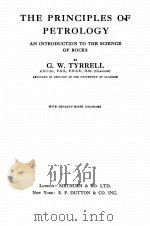
- THE PRINCIPLES OF PETROLOGY AN INTRODUCTION TO THE SCIENCE OF ROCKS
- 1952 E.P. DUTTON AND CO. LTD.
-
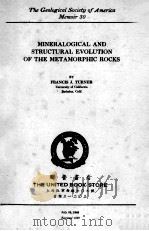
- MINERALOGICAL AND STRUCTURAL EVOLUTION OF THE METAMORPHIC ROCKS
- 1948 THE UNITED BOOK STORE
-
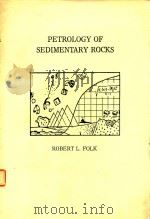
- PETROLOGY OF SEDIMENTARY ROCKS
- 1980 HEMPHILL
-
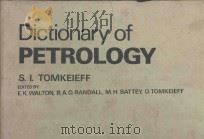
- DICTIONARY OF PETROLOGY
- 1983 COPYRIGHT
-
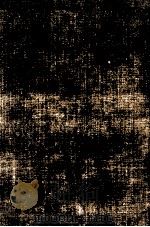
- The Principles of Petrology
- 1949 Methuen & Co.LTD
-

- ATLAS OF THE TEXTURAL PATTERNS OF METAMORPHOSED (TRANSFORMED AND DEFORMED)ROCKS AND THEIR GENETIC SI
- 1985 THEOPHRASTUS PUBLICATIONS S.A.
-

- A HISTORICAL SURVEY OF PETROLOGY
- 1954 OLIVER & BOYD
提示:百度云已更名为百度网盘(百度盘),天翼云盘、微盘下载地址……暂未提供。➥ PDF文字可复制化或转WORD
